5 Great Shade Perennials For Cape Cod
5 Great Shade Perennials For Cape Cod
If you’ve got shady gardens, we’ve got some plant suggestions for you! These perennials do well in shade and part shade. Full shade is defined as gardens that get no direct sun or just dappled sun that filters through the canopy of trees. Part shade is a garden that gets two to four hours of direct sun in the early morning or late afternoon.
Those with shady gardens have a more limited palette of flowering perennials, but you can have a lovely garden by focusing on a variety of foliage colors and textures. Design your garden with leaf diversity in mind, and then add annual begonias for flower power.
Hellebores
If you’ve got shade, you need some plants in the genus Helleborus. These evergreen perennials flower in the winter and early spring. Because what looks like the flower is actually the sepals, which are modified leaves, the “bloom” lasts for two months or longer. The Christmas rose varieties, Helleborus niger, flower from November through March. The Lenten rose, Helleborus orientallis, begins to bloom in late March on Cape Cod and the flowers last into May.
Hellebores are evergreen in the garden, but usually by springtime the foliage looks a bit winter-worn. Just cut those leaves off and the plant will soon grow fresh foliage during the summer. Hellebores do well in shade or part-shade. The Lenten rose varieties often self-seed and can spread. And here’s another great thing about these plants: the rabbits don’t eat them!
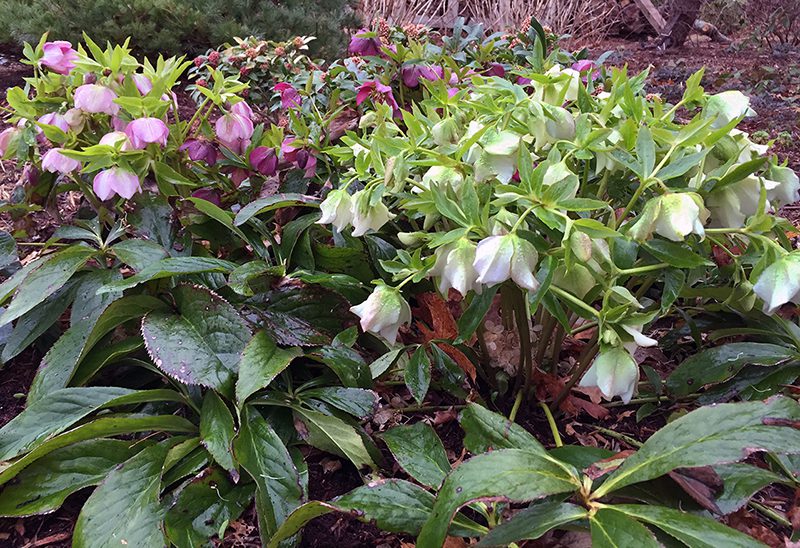
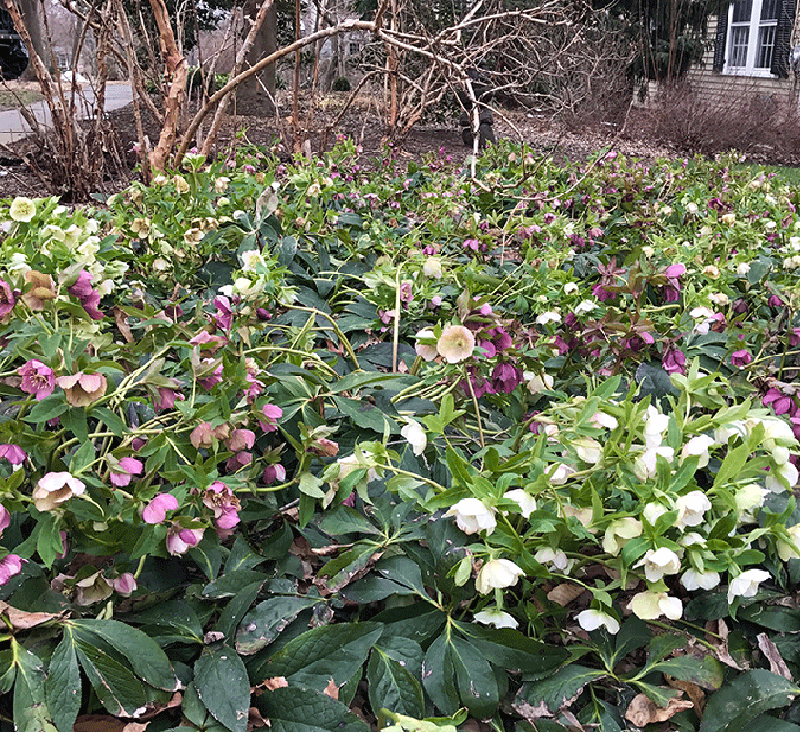
Japanese Painted Fern
The Japanese painted fern, Anthyrium niponicum var pictum, has purple, silver, pink and green in its leaves. This fern stays fairly low to the ground, and doesn’t tend to spread, so plant them about 18 inches apart for a good show of color. This fern is a great companion with that standard shade plant, the hosta.
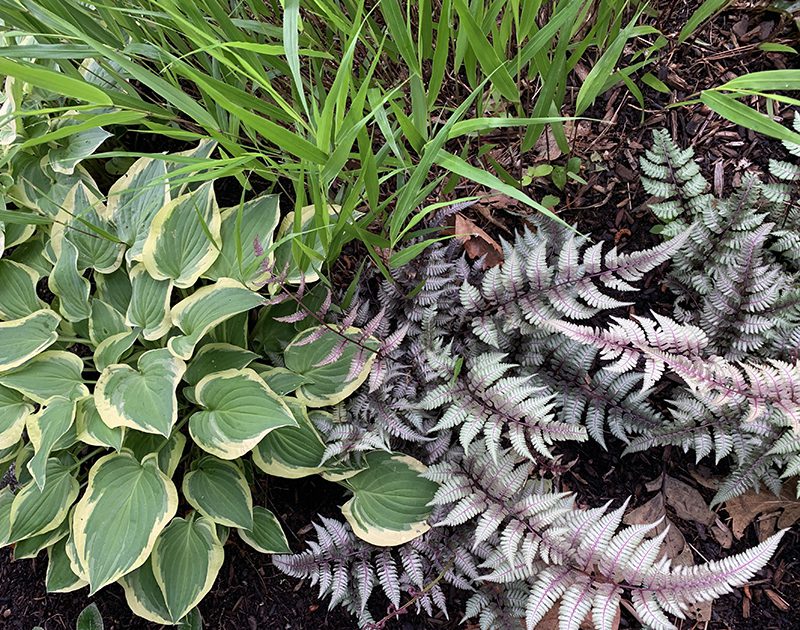
Hakonechloa macra ‘Aureola’
This plant is commonly called Japanese forest grass, and for part-sun or part-shade gardens it’s one of the most valuable plants you can grow. Not only do you have the butter-yellow color from April until hard frost, but the plant also brings the thin, grass texture into the garden.
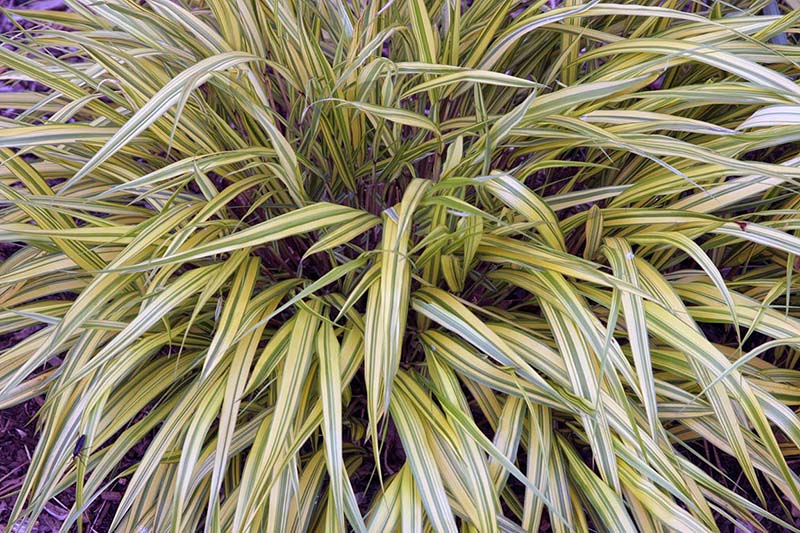
Dicentra eximia ~ fringed bleeding heart.
Native to the eastern United States, this bleeding heart is particularly happy in part shade and where the summers aren’t too hot. If you plant this Dicentra where it gets two or three hours of direct sun but is shaded in the heat of the noon, it will reward you with flowers all summer. This is one of the earliest flowering plants that attract hummingbirds as well.
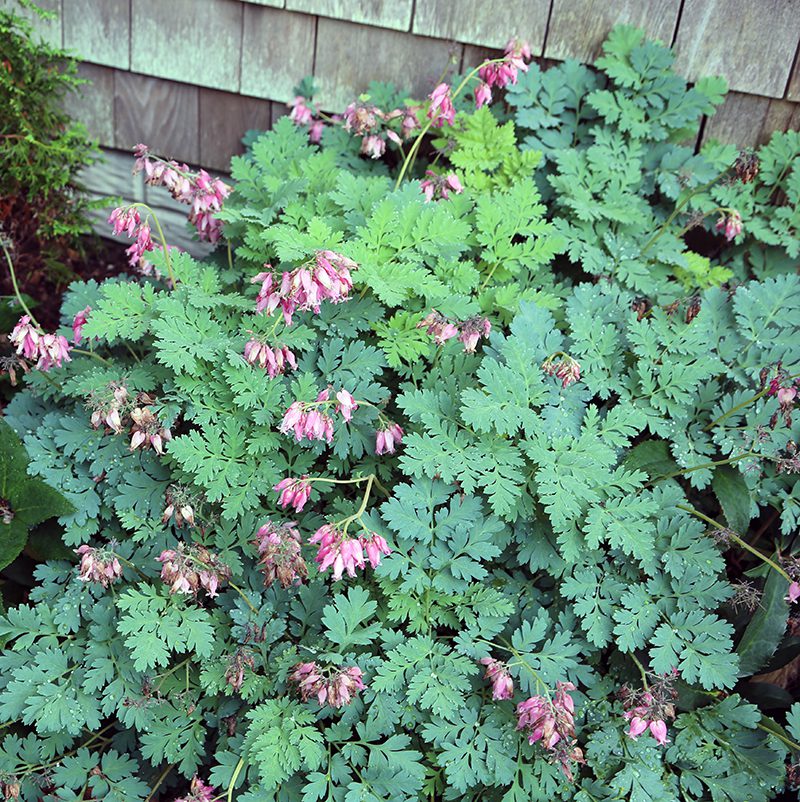
Geranium macrorrhizum
I wish this plant had a singular common name, but unfortunately the term “big root geranium” or “bloody cranesbill” is applied to many perennial geraniums. But here’s why you want to remember the botanical name of this one: weed smothering, tolerant of dry shade, rabbits and deer don’t eat it, and it makes the perfect socks and shoes for shade-loving shrubs and trees. All of that should be reason to grow this plant even before we talk about flowers. But yes, it blooms in June.
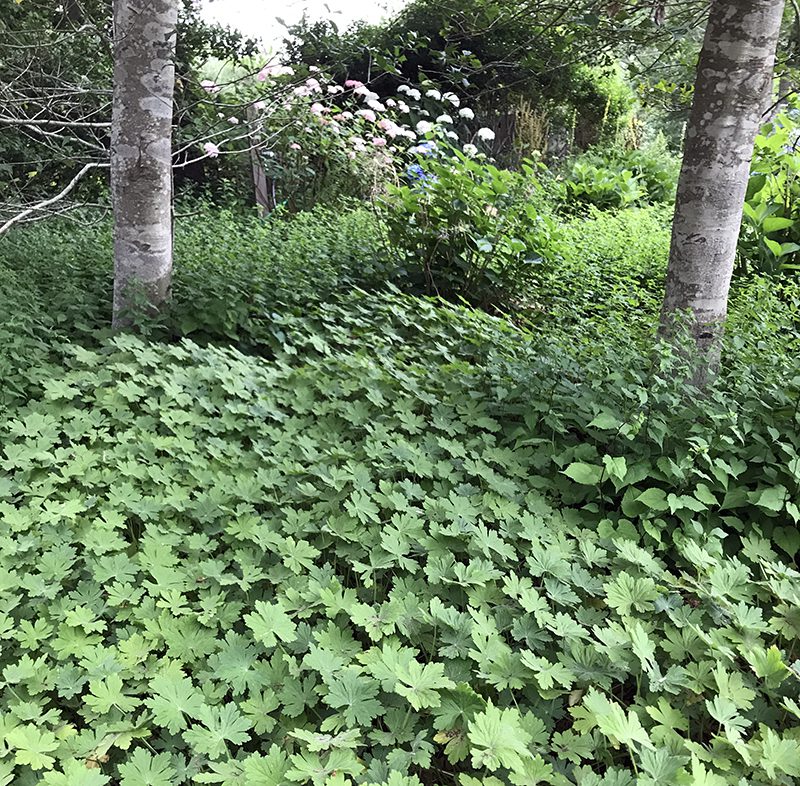
Subscribe To Our Newsletter
Sign up for our weekly email about sales and events.
